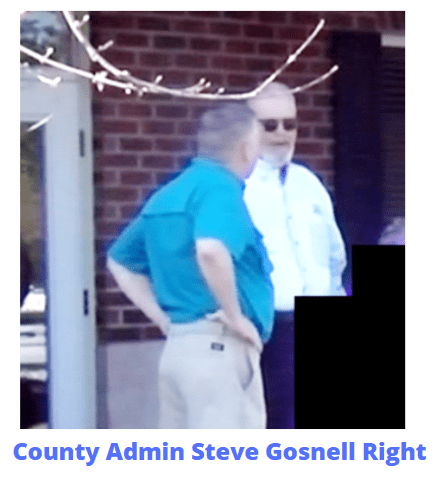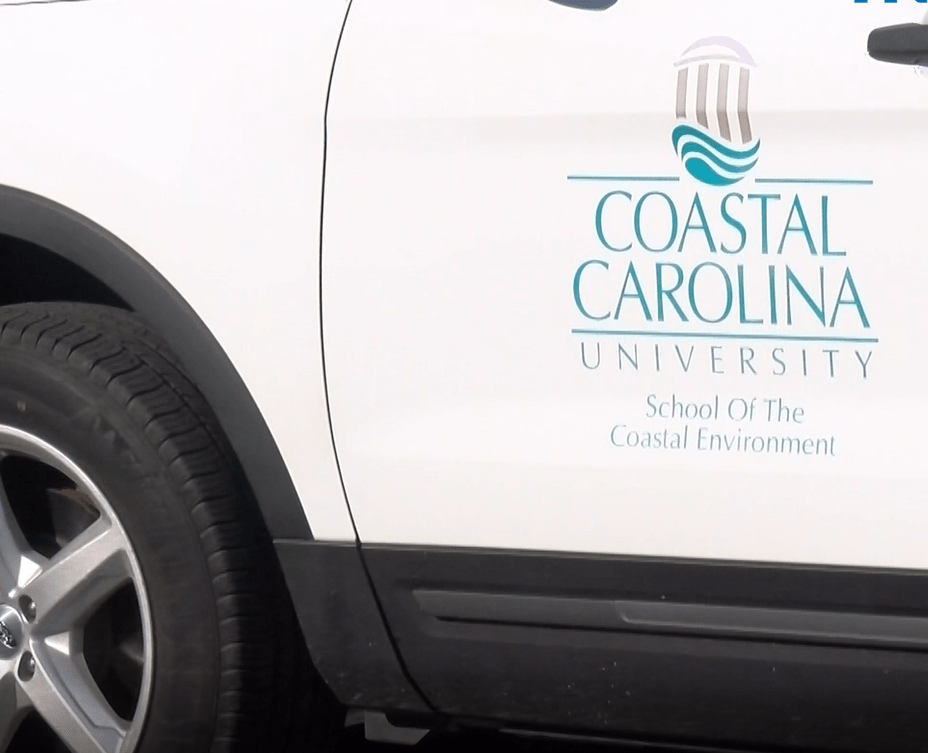In February 2021, an associate with the Horry County Solid Waste Authority reached out to MyrtleBeachSC News stating concerns that the landfill was leaking high levels of toxins into the swamps around that facility.
We informed the whistleblower that our news team had some experience in these matters. We stated that coming forward rarely turned out well for whistleblowers. We humorously joked that whistleblowers often ended up in landfills like these.
BIG MONEY AT RISK IN WASTE MANAGEMENT
The Horry County Solid Waste Authority (SWA) had a $27 million dollar budget for 2019. Those numbers consistently increase.
The SWA charges $36 for each ton of household waste dumped at the landfill. $17 per ton is used to fund operating expenses.
TAKING A HUGE RISK
Realizing that big money was at stake here, we ultimately decided to move forward.
We chose to test the landfill to confirm or quash all suspicions.
We hired Rogers and Callcott out of Columbia, S.C. and ran a full battery of tests that included testing for heavy metals. Rogers and Callcutt is considered among the best in the state, as well as, among the best in the nation.
TESTS RESULTS SHOW AN ECOLI READING OF 39,726. 349 IS SAFE FOR WASTE WATER. 0 IS SAFE FOR DRINKING WATER
Arsenic in the water tested mildly high. The greatest concern was the high level of ecoli found leaving the facility.
We noted that February was a rainy month. Flooding in certain areas, like Socastee, happened during this testing time period.
SWA DUMPS ECOLI AT 39726 particles by MyrtleBeachSC news on Scribd
COUNTY COUNCIL
I decided to bring our findings to Horry County Council at an Infrastructure and Regulation meeting rather than just publish.
I chose to do this because of the ongoing issues we had with Brad Dean, former MBACC C.E.O. when we reported on oceanfront water quality issues several years ago. Dean spent approximately $10 million tax payer dollars calling our news site FAKE NEWS, despite the fact that we reported SCDHEC numbers directly at the time.
Councilman Al Allen called for an independent testing agency to test the landfill the following day.
WHO IS RESPONSIBLE?

The buck always has to stop somewhere. In this case, the ultimate authority is Steve Gosnell, Horry County Administrator.
Oftentimes government wants to be the authority on all things life, yet prefers not be held responsible when issues like these arise. Finger-pointing and minimizing are common responses from bureaucrats when pushed for a response.
Whether Mr. Gosnell prefers it or not, it is his responsibility to hold the contractor that he hired accountable in managing the county’s solid waste.
At the moment, no regularly scheduled testing nor onsite spot testing for heavy metals are done by Horry County government at the SWA. No regular protocols nor common testing standards exist to ensure the facility does not leak out into the watershed at large.
These protocols are especially important during hurricanes and high water events which are now common on the Waccamaw River.
SURPRISE

Upon arriving the next morning, we were surprised to see that Horry County Administrator Steve Gosnell hired Coastal Carolina University to test the water samples. Coastal Carolina University does not have the facilities nor the ability to test the landfill for heavy metals.
CCU runs only the most basic of tests. From our many calls, we learned Coastal Carolina is not considered an authority in the environmental community because it does not have the testing methodology to test an environmental landfill for metals.
CCU’s numbers for ECOLI also came back high at one location as follows:
HC Landfill Official Results_2021 Special Sampling by MyrtleBeachSC news on Scribd
HISTORY ON THE SOLID WASTE AUTHORITY
All of the garbage collected in Horry County is delivered to the Solid Waste Authority (SWA). The SWA landfill was built on Highway 90, near Conway, 30 years ago with an expected shelf life of 8 years. The site still operates today and is growing.
The site is in the middle of and completely surrounded by Sterritt Swamp. Sterritt Swamp feeds directly into the Waccamaw River.
WHAT THE EXPERTS SAY
We reached out to 3 different sources from universities to private labs. As most receive some state funding, they each asked not to be quoted on the record. Each stated that absolutely no toxic waste nor ecoli should ever be allowed to leave that facility. This includes any ecoli left by animal waste from animals feeding on the materials at the facility.
Writes Paul Gable of the Grand Strand Daily:
SWA officials blamed the E.coli on seagulls who feast on the landfill garbage but the heavy metal findings have not been addressed to date.
Someone should address how barium, zinc and chromium got into Sterritt Swamp near the landfill.
It is certainly time for the buddy-buddy behind the scenes decision making at the SWA to stop, for the authority to become completely transparent and for county council to insist that Ordinance 60-90 be adhered to.
WACCAMAW RIVERKEEPER’S CARA SCHILDTKNECHT SAYS
We reached out to Cara Schildtknecht of Waccamaw Riverkeeper. Waccamaw Riverkeeper works in conjunction with CCU and uses their facilities. This organization also can not test for lead, arsenic or other heavy metals that are dumped at the SWA.
Cara joined Winyah Rivers as the Waccamaw Riverkeeper in May 2017. She leads the organization’s education and advocacy efforts in the Waccamaw watershed in both North and South Carolina. Her team has conducted ongoing testing of Sterritt Swamp for years.
On the results: Says Cara, “Based on the data obtained from the independent sampling on April 15th, it would be irresponsible to say whether or not there is a pollution issue originating at the Solid Waste Authority. Additional testing would be required to make a definitive identification of pollution. Concern over other pollutants (such as heavy metals) would have to be investigated further through additional certified testing.”
On our volunteer results: Schildtknecht adds “Fecal bacteria levels are consistently low at the Sterritt Swamp volunteer monitoring site. For the entire data set at the site (Mar 2007 to Mar 2021), there have been 17 contraventions out of 292 samples (6%) for E. coli. Overall, the Waccamaw River volunteer monitoring data shows consistently low E. coli concentrations.”
About discharge permitting: Under the EPA’s National Pollutant Discharge Elimination System (NPDES) permits, general requirements are placed on permitted discharges to support the Clean Water Act. “Permits contain limits on what you can discharge, monitoring and reporting requirements, and other provisions to ensure that the discharge does not hurt water quality or people’s health.” (https://www.epa.gov/npdes/npdes-permit-basics).
LEGAL POLLUTERS
Permits state how much pollutant can be discharged into our waterways, not that pollutants CAN NOT be discharged into our waterways.
In short, it is legally okay to pollute in limited amounts per the Federal Government.
RESPONSE FROM Kelly Moore | Director of Public Information Horry County
Because neither Horry County nor our partners with Coastal Carolina can verify the samples collected by the alleged whistleblower, we cannot speculate on those results. What we can share with certainty is that based on the records provided to us via Mr. David Hucks, the results of the samples collected by CCU were dramatically lower than what was reported in the initial, unverified report we were provided.
The results, collected and analyzed by the Coastal Carolina Environmental Quality Lab, do reflect a medium-high E. Coli reading at one of the outfalls, listed in the results as outfall six, water from a sediment and erosion control pond at the Solid Waste Authority landfill site. In addition, the lab provided us with confirmation that seagulls can shed high densities of these organisms through their droppings and that can impact water quality readings in areas where gulls are present, such as the Solid Waste Authority landfill site. We do not currently have a reason to believe that this outfall directly impacts the water quality of Sterritt Swamp or the Waccamaw River. Ultimately, it is premature, and inappropriate to draw conclusions from one or two pieces of data. As such, this review will continue until the concerns are addressed.
After discussion with the water quality experts at Coastal Carolina, we are working with them to coordinate further discussion with SCDHEC, as the regulatory agency, to ensure that not only is the landfill meeting the water quality standards for their permit, but also the water quality standards along Highway 90 at Sterritt Swamp are not being impacted by any such discharges.
Water quality monitoring is critical for this and other sites to ensure that we maintain the appropriate standards for water quality protecting our citizens and our valuable natural resources. We will continue those efforts, as we have done, with our community partners.
Best,
Kelly
Kelly Moore | Director of Public Information
Horry County Government
Public Information
1301 Second Avenue, Conway, South Carolina 29526

